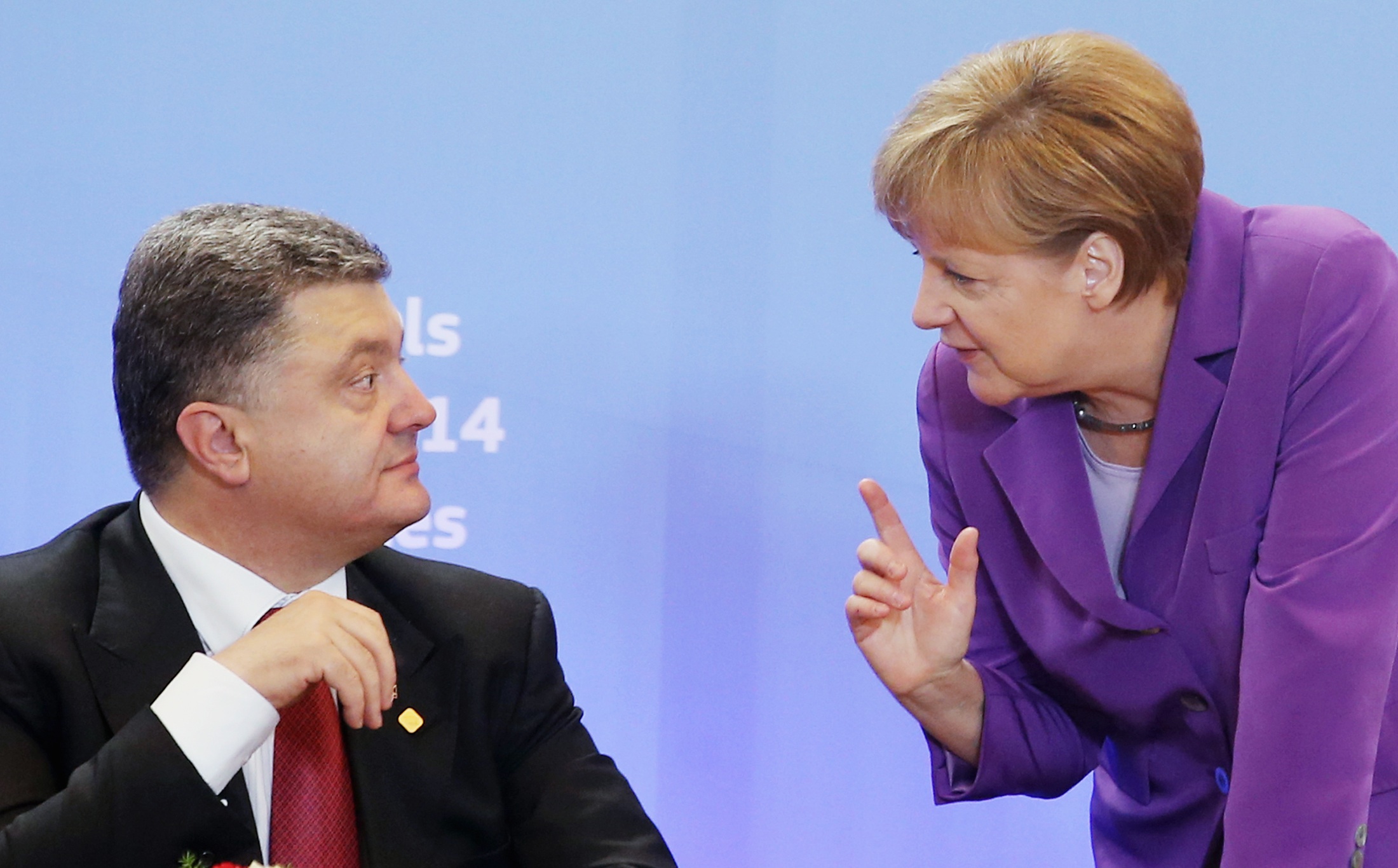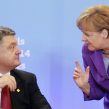
Defining the Russia-Ukraine Conflict: An Uphill Effort in Berlin
Publication: Eurasia Daily Monitor Volume: 11 Issue: 134
By:

German diplomacy went into high gear after the shooting down of an international airliner by Russia’s proxy forces in Ukraine’s east on July 17. The terrorist act with the use of a Russian-supplied surface-to-air missile system killed all 298 people from 11 countries aboard the plane (see EDM, July 18, 21).
Widely seen as a turning point in international assessments of this conflict, the July 17 attack does not appear to have significantly changed Berlin’s policy. The German government interprets this atrocity as confirming the correctness of its push for a ceasefire in the field and political negotiations between the Ukrainian government and Russia’s proxies. These twin goals form the basis of a common Russo-German policy at the present stage.
Some differences of nuance and emphasis can be observed in comparing the statements of Chancellor Angela Merkel with those of Foreign Affairs Minister Frank-Walter Steinmeier. Basically, however, Berlin subscribes to Moscow’s definition of this conflict as an internal one within Ukraine, not a state-on-state conflict undertaken by Russia on Ukraine’s territory. Thus, Berlin performs a double service: it absolves Russia of responsibility for this new-type war of aggression, and it endorses Russia’s claim to arbitrate an ostensibly internecine conflict in Ukraine.
From these shared premises flow the joint Russo-German prescriptions, namely: an “immediate” ceasefire, negotiations between Kyiv and the Donetsk-Luhansk “republics” (“Novorossiya”) under the aegis of Russia and the Organization for Security and Cooperation in Europe (OSCE—eliminating the West, while Germany self-recuses), and inserting Russia into potential follow-up negotiations on Ukraine’s state-territorial structure.
If accepted, those prescriptions would: 1) stop the Ukrainian forces’ ongoing rollback of secessionist forces into shrinking perimeters; 2) cement “Novorossiya’s” positions on the ground and facilitate their resupply from Russia—in effect, rescuing them from defeat; 3) obviate Moscow’s dilemma of either accepting its proxies’ defeat or, alternatively, intervening more openly in the fighting and risking serious Western sanctions thereby; 4) hand over the political and military control in Donetsk-Luhansk to Moscow-led secessionists “representing Ukraine’s east,” fast enough to pre-empt the return of Ukrainian authority and free elections there; and 5) lock Kyiv into a position of equivalence with the secessionist authorities in negotiating a political-constitutional settlement, which is Moscow’s next-stage goal.
The German position seems internally contradictory. On one hand, Berlin denounces the crime of shooting down the civilian airliner, condemns the secessionist authorities’ sacrilegious handling of the victims’ remains, and deplores the same authorities’ sabotage of investigation efforts. But on the other hand, Berlin wants Kyiv to enter into negotiations and potential agreements with those same secessionist authorities via the Russia-dominated Contact Group (see EDM, July 11, 18).
No such internal contradiction besets Moscow. The Kremlin handles the July 17 atrocity basically as a public relations problem, albeit one of unusual gravity. It has not prompted Moscow as yet to distance itself from specific proxies in Donetsk-Luhansk or from the Novorossiya project. Moscow is actually escalating its military involvement. Ukrainian border posts are coming under cross-fire attacks from Russian territory and from secessionist-controlled Ukrainian territory. Such attacks aim to increase the flow of Russian arms and weapons across that border into Ukraine. Secessionist forces have received more anti-aircraft systems from Russia. They (or Russian crews on assignment with them) have downed two Ukrainian military planes just prior to July 17, and two Ukrainian Su-25 planes in one day, July 23 (Ukrinform, July 23).
The Russo-German proposal on border monitoring cornered Ukraine at the recent conference in Berlin. Masterfully formulated, the joint proposal allows Russia to set three conditions to border monitoring: a) Ukraine to establish a ceasefire and dialogue with the secessionist leaders; b) Ukraine and the OSCE each to negotiate with Russia about the ways and means of border monitoring; and c) the border monitoring agreement to be valid only for the duration of the ceasefire, lapsing in the event that Ukraine discontinues the ceasefire (i.e., if it attempts to liberate secessionist-controlled areas), in which case Russia would be free again to supply and reinforce its protégés across the border (see EDM, July 3; auswawertiges-amt.de, July 2).
Since then, Ukrainian forces have continued regaining portions of the national territory while Russia has supplied its protégés with heavier weapons, now including anti-aircraft systems.
The Ukrainian government has finally started explaining the essence of this conflict directly to the German press. As summed up by Prime Minister Arseniy Yatseniuk, “There is no civil war in my country. Ukraine finds itself in a war that Russia made possible and is fueling. This is the right definition. [Vladimir] Putin must stop supplying deadly weapons and recall its agents from Ukraine’s territory. Control over the Russia-Ukraine border must be restored. This is my peace plan” (Frankfurter Allgemeine Sonntagszeitung, July 20).




